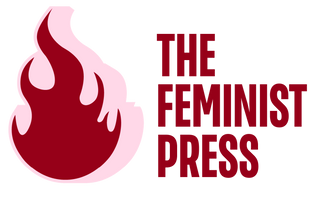Submission Guidelines
Download Citation Guidelines as a PDF.
Women's Studies Quarterly only accepts submissions based on our current CFP.
FORMATTING
Papers should be submitted in standard formatting (12 point font, Times New Roman, double spaced, standard margins). Please remove all identifying information from the file uploaded to Submittable.
Do NOT use bold, lines, designs, capitalization, or any other type of formatting apart from standard formatting in your essay. Manuscripts must be saved in Microsoft Word. We cannot accept any other formats.
ARTICLES
Articles should be no longer than 6,000 words (which should include un-embedded footnotes). If you wish to submit an article longer than 6,000 words, you should confer with the guest editors. A half-page image is approximately 200 words. (See the section Images, Tables, and Graphs below.)
Please include an abstract and keywords.
BOOK REVIEWS
Book reviews should be submitted in standard formatting (12 point font, Times New Roman, double spaced, standard margins). Book reviews should not exceed 1,400 words, unless otherwise specified by the guest editors.
BIOGRAPHY
Please include a brief (40 word or less) biography as a cover letter. Your biography should be submitted in the “cover letter” section of the Submittable form. All authors, poets, translators, and visual artists who submit pieces to the journal should include a biography.
DO NOT use the "footnote" function in Word to create endnotes, but type them as regular text at the end of your manuscript. Use bracketed numbers (for example <2> would indicate reference number 2 in text ). At the end of the manuscript, type out your notes using simple numbers with periods-for example, 2. for note number 2. Endnotes should be reserved for substantive commentary rather than used for citation.
DO NOT cite page references as footnotes. Also, DO NOT include bibliographic information in notes.
IMAGES, TABLES, AND GRAPHS
If figures or images are to be included, the author may leave images embedded in the text, however, please also attach all visual materials separately, labeled accordingly. Images should be at least 300 dpi (high-resolution) with a width of 4.25 inches in order to be printed clearly in the journal. All images must be in black and white. Captions should be listed on a separate sheet and included at the time of submission. Images and captions must accompany final manuscript. When counting the length of your manuscript, each image or figure should be an estimated half a page.
PERMISSIONS AND FAIR USE
You are responsible for obtaining permission to use any quoted material that appears in your submission that exceeds fair use standards. Please check with your editor at the Press if you have any questions about fair use.
Permission to reprint copyrighted poems or lyrics that exceed two lines in length must be secured by the author. WSQ staff urges you, the contributor, to begin this typically drawn-out process immediately upon acceptance of your piece for publication.
COPYEDITING
Your manuscript will be copyedited after you submit your final version. The copyediting will be forwarded to you for your review with instructions from your editor.
Works Cited Formatting
WSQ follows the Chicago Manual of Style, 18th Edition. All references must be in the text using the Author-Date style (see examples below). All material cited should be included at the end under “Works Cited.” WSQ does NOT use reference lists. If you are unable to access the Chicago Manual of Style, please feel free to contact Rachel Page (rachel@feministpress.org) with any formatting questions.
In-text citation: (Author year, page)
Book with Single Author/Editor
Lorde, Audre. 2007. Sister Outsider. Ten Speed Press.
(Lorde 2007, 99–100)
Hernández Castillo, Rosalva Aída, ed. 2001. The Other Word: Women and Violence in Chiapas Before and After Acteal. International Work Group for Indigenous Affairs.
(Hernández Castillo 2001, 33)
Book with Multiple Authors/Editors
Ward, Geoffrey C., and Ken Burns. 2007. The War: An Intimate History, 1941–1945. Knopf.
(Ward and Burns 2007, 52)
Chapter in an Edited Book
Morales, Rosario. 2015. “The Other Heritage.” In This Bridge Called My Back, edited by Cherríe Moraga and Gloria Anzaldúa, 104–105. 4th ed. SUNY Press.
(Morales 2015, 104)
Journal Article
Strassel, Annemarie. 2013. “Designing Women: Feminist Methodologies in American Fashion.” WSQ 41 (1/2): 35–59.
(Strassel 2013, 35–59)
Karmaus, Wilfried, and John F. Riebow. 2004. “Storage of Serum in Plastic and Glass Containers May Alter the Serum Concentration of Polychlorinated Biphenyls.” Environmental Health Perspectives 112 (May): 643–47. http://www.jstor.org/stable/3435987.
(Karmaus and Riebow 2004, 645)
** Journal Name Volume (Issue): Page Range (with en dash) **
Newspaper/Magazine Article
Associated Press. 2015. "After Lobbying Push, Drugmaker Resubmits Women's Sex Pill." Published in New York Times, Feb 17.
Carey, Benedict. 2008. “For the Brain, Remembering Is Like Reliving.” New York Times, September 4. http://www.nytimes.com/2008/09/05/science/05brain.html.
Dissertation/Thesis
Silva, Sergio Osvaldo. 1986. “Bilingual Public Broadcasting in Northern California: A History of Radio Station KBBF-FM.” MA Thesis, San Francisco State University.
Websites/Blogs
Girl Scouts of America. 2014. “Girl Scouts Timeline: Decade by Decade.” http://girlscouts.org/who_we_are/history/timeline.
Ford, Jillian. 2014. “Embracing ‘Crazy’ in the ‘Land of the Free.’” Crunk Feminist Collective. December 18. http://www.crunkfeministcollective.com/2014/12/23/embracing-crazy-in-the...
Palestinian Queers for Boycott, Divestment, and Sanctions (blog). https://pqbds.wordpress.com/.
Audiovisual Content
Holiday, Billie. 1958. “I’m a Fool to Want You” (vocal performance). By Joel Herron, Frank Sinatra, and Jack Wolf. Recorded February 20, with Ray Ellis. On Lady in Satin, Columbia CL 1157, 33⅓ rpm.
Adichie, Chimamanda Ngozi. 2009. “The Danger of a Single Story.” TED video, 18:49. http://www.ted.com/talks/chimamanda_adichie_the_danger_of_a_single_story.
Publication Ethics and Publication Malpractice Statement
Our publication ethics and publication malpractice statement is mainly based on the Code of Conduct and Best-Practice Guidelines for Journal Editors (Committee on Publication Ethics, 2011).
PUBLICATION DECISIONS
The editor of the journal is responsible for deciding which of the articles submitted to the journal should be published. The editor may be guided by the policies of the journal's editorial board and constrained by such legal requirements as shall then be in force regarding libel, copyright infringement and plagiarism. The editor may confer with other editors or reviewers in making this decision.
FAIR PLAY
An editor will at any time evaluate manuscripts for their intellectual content without regard to race, gender, sexual orientation, religious belief, ethnic origin, citizenship, or political philosophy of the authors.
CONFIDENTIALITY
The editor and any editorial staff must not disclose any information about a submitted manuscript to anyone other than the corresponding author, reviewers, potential reviewers, other editorial advisers, and the publisher, as appropriate.
DISCLOSURE AND CONFLICTS OF INTEREST
Unpublished materials disclosed in a submitted manuscript must not be used in an editor's own research without the express written consent of the author.
DUTIES OF REVIEWERS
-
Contribution to Editorial Decisions - Peer review assists the editor in making editorial decisions and through the editorial communications with the author may also assist the author in improving the paper.
-
Promptness - Any selected referee who feels unqualified to review the research reported in a manuscript or knows that its prompt review will be impossible should notify the editor and excuse himself from the review process.
-
Confidentiality - Any manuscripts received for review must be treated as confidential documents. They must not be shown to or discussed with others except as authorized by the editor.
-
Standards of Objectivity - Reviews should be conducted objectively. Personal criticism of the author is inappropriate. Referees should express their views clearly with supporting arguments.
-
Acknowledgement of Sources - Reviewers should identify relevant published work that has not been cited by the authors. Any statement that an observation, derivation, or argument had been previously reported should be accompanied by the relevant citation. A reviewer should also call to the editor's attention any substantial similarity or overlap between the manuscript under consideration and any other published paper of which they have personal knowledge.
-
Disclosure and Conflict of Interest - Privileged information or ideas obtained through peer review must be kept confidential and not used for personal advantage. Reviewers should not consider manuscripts in which they have conflicts of interest resulting from competitive, collaborative, or other relationships or connections with any of the authors, companies, or institutions connected to the papers.
DUTIES OF AUTHORS
-
Reporting standards - Authors of reports of original research should present an accurate account of the work performed as well as an objective discussion of its significance. Underlying data should be represented accurately in the paper. A paper should contain sufficient detail and references to permit others to replicate the work. Fraudulent or knowingly inaccurate statements constitute unethical behavior and are unacceptable.
-
Data Access and Retention - Authors are asked to provide the raw data in connection with a paper for editorial review, and should be prepared to provide public access to such data (consistent with the ALPSP-STM Statement on Data and Databases), if practicable, and should in any event be prepared to retain such data for a reasonable time after publication.
-
Originality and Plagiarism - The authors should ensure that they have written entirely original works, and if the authors have used the work and/or words of others that this has been appropriately cited or quoted.
-
Multiple, Redundant or Concurrent Publication - An author should not in general publish manuscripts describing essentially the same research in more than one journal or primary publication. Submitting the same manuscript to more than one journal concurrently constitutes unethical publishing behavior and is unacceptable.
-
Acknowledgement of Sources - Proper acknowledgment of the work of others must always be given. Authors should cite publications that have been influential in determining the nature of the reported work.
-
Authorship of the Paper - Authorship should be limited to those who have made a significant contribution to the conception, design, execution, or interpretation of the reported study. All those who have made significant contributions should be listed as co-authors. Where there are others who have participated in certain substantive aspects of the research project, they should be acknowledged or listed as contributors. The corresponding author should ensure that all appropriate co-authors and no inappropriate co-authors are included on the paper, and that all co-authors have seen and approved the final version of the paper and have agreed to its submission for publication.
-
Disclosure and Conflicts of Interest - All authors should disclose in their manuscript any financial or other substantive conflict of interest that might be construed to influence the results or interpretation of their manuscript. All sources of financial support for the project should be disclosed.
-
Fundamental errors in published works - When an author discovers a significant error or inaccuracy in his/her own published work, it is the author’s obligation to promptly notify the journal editor or publisher and cooperate with the editor to retract or correct the paper.

